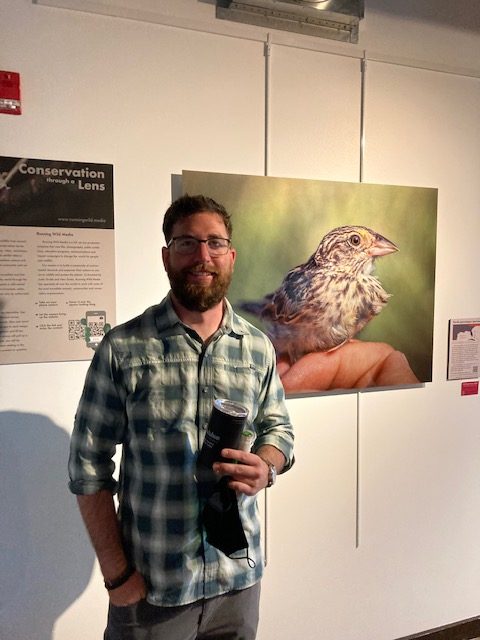
Conservation through a Lens Highlights Importance of Guarding our Wildlife

Conservation through a Lens Highlights Importance of Guarding our Wildlife
By: claycormany in Outdoors
There are many ways — large and small — that an individual can help preserve our environment, providing a better habitat for plants and animals. Accordingly, my wife and I use at least a few recyclable bags each time we shop for groceries, and we make a point of picking up garbage that we come across on dog walks. However, I wouldn’t have thought a camera could be used as a means of conservation — until I attended the opening of Justin Grubb’s “Conservation through a Lens” Exhibit at the Grange Insurance Audubon Center in south Columbus. Justin’s photos drive home a painful but unavoidable fact: Many species of animals have been brought to the brink of extinction by human action. Sometimes the harm is unintentional, but more often it stems from irresponsible behavior such as poaching and uncontrolled hunting. The American bison is a case in point. In the early 19th Century, there were over 60 million of these beasts across North America. By the end of that century, their number had been cut by about 99.8 percent. Relentless hunting by white settlers and the U.S. government was the main cause of this decline. In the case of the government, the elimination of the bison was seen as a way to damage a resource central to the lives of indigenous tribes in the Plains.
Another animal that was almost wiped out by excessive hunting was the red fox. In fact, this species of wolf did become extinct in the wild in 1980. At that time, the last known red wolves were transferred to managed care facilities for breeding. Then in 1987, four pairs were released into a North Carolina wildlife refuge center where their numbers began to increase.
Justin’s display included a photo of a snow-covered bison as well as a series of photos focusing on red wolves. Other photos featured a wide range of animals from different parts of the world, including a Florida grasshopper sparrow, a monarch butterfly, a bark scorpion, a bush elephant, a Bornean orangutan with her baby, and a black rhino. Anyone who saw the rhino photo would think the animal’s horns were deformed — and they’d be right. Conservationists deformed the horns, knowing poachers won’t likely kill a black rhino with flawed horns since there is little money to be made from them.
Justin and his colleagues used mirrorless cameras with telescopic lenses to take their animal pictures. Justin explained to me that such a camera allows a photographer to take numerous photos in rapid succession. While this made it easier to take photos, it didn’t guarantee success. Justin admitted that sometimes an animal worthy of being photographed dashed away before it could be captured on film.
During his presentation to those attending the opening of his exhibit, Justin explained that almost everyone has a conservation story to tell, and such a story can potentially inspire others to be more caring about the environment. He may be right. I most certainly have a conservation story worth sharing.
Several years ago, while taking a morning run near the beaches of Fort Myers, Florida, I came across a baby sea turtle doggedly trying to “flipper” his way to the ocean. Unfortunately, the little guy was moving away from the water rather than toward it. Realizing this miniature “wrong-way Corrigan” was doomed without human intervention, I scooped him up and carried him to the shoreline. Just to be safe, I took several steps into the water before releasing the turtle and watching him swim away.
“Conservation Through a Lens” will be at the Audubon Center, 505 West Whittier Street, Columbus, OH 43215, until June 18. Soon thereafter, a portion of it will be at the McConnell Arts Center in Worthington. The display has an interactive dimension. Using the QR code next to a particular image, a person with a cellphone can bring up additional stories, videos, and other information relevant to that image.
Tags: Audubon, camera, conservation, Justin, red fox

